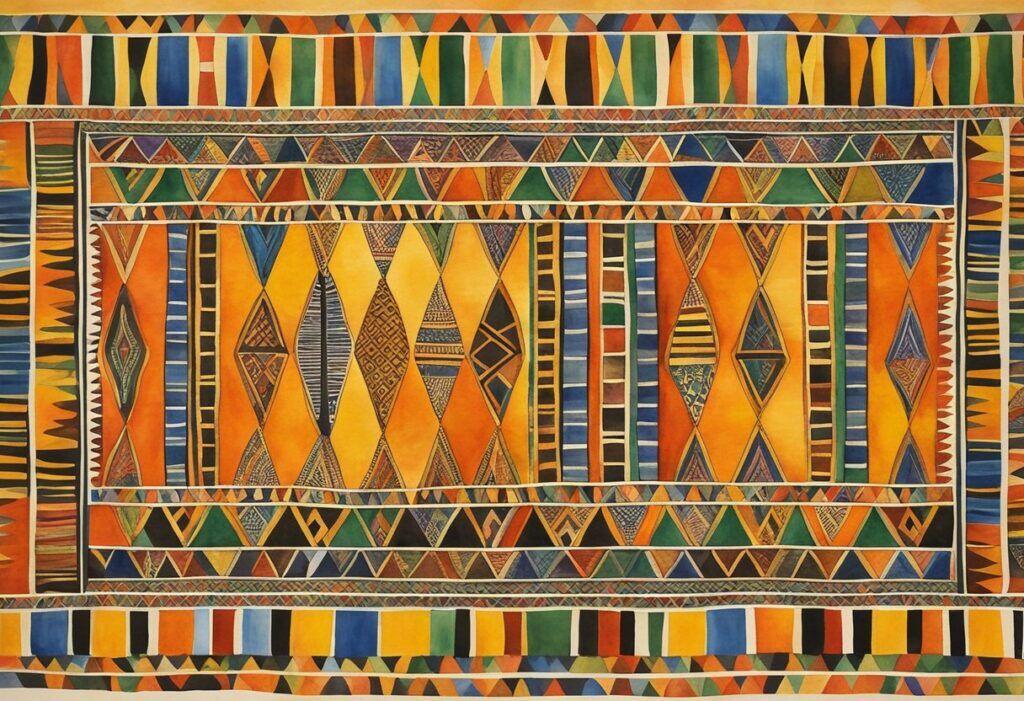Unveiling the Intricate Elegance of Kente Cloth: An Exploration of History, Symbolism, and Modern Adaptations
Table of Contents
Introduction
As a resplendent tapestry intricately woven with history, culture, and artistry, Kente cloth stands as a testament to the enduring legacy of Ghanaian artistry. Its vibrant hues, intricate patterns, and deep symbolism have captivated the world, rendering it a symbol of African excellence and cultural heritage.
Ancient Roots
Kente cloth, or “nwentoma” in the Akan language, originated among the Ashanti people of Ghana in the 17th century. Legend has it that the cloth’s genesis lies in the threads of a spider’s web, which inspired the Ashanti weaver Kwaku Dua. The distinct patterns and woven motifs that characterize Kente cloth were developed over time, representing various aspects of Ashanti culture and society.
Types of Kente Cloth
There are numerous types of Kente cloth, each with its unique patterns, colors, and meaning. Some of the most notable variants include:
Adinkra: Featuring motifs representing proverbs, adages, and spiritual concepts.
Dote: Known for its rectangular patterns and bold geometric designs.
Nwena Nkokor: Depicting the shape of the starfish, symbolizing hope and vitality.
Oyokoman: Characterized by vibrant purple and yellow stripes, representing the unity of the Ashanti people.
Sito: Featuring a series of straight lines, symbolizing harmony and stability.
Symbolism and Cultural Significance
Kente cloth is imbued with profound symbolic meanings.Its vibrant colors represent various aspects of life, such as:
Royal blue: strength, loyalty, and authority.
Gold: Wealth, prosperity, and sovereignty.
Green: Growth, renewal, and fertility.
Red: Passion, bravery, and sacrifice.
The intricate patterns and motifs woven into Kente cloth are also highly symbolic, conveying a range of messages and narratives.For example,the “sankofa” motif symbolizes the importance of learning from the past,while the “kete yara” motif represents the fight for independence and resilience.
Modern Adaptations
In recent times,Kente cloth has extended its reach beyond traditional garments to embrace a myriad of modern adaptations. These include:
Fashion: Incorporating Kente patterns into contemporary clothing designs, from accessories to high-fashion garments.
Home décor: Using Kente motifs in textiles, rugs, pillows, and wall hangings to add a touch of African flair to interior spaces.
Art: Utilizing Kente techniques and patterns to create stunning works of art, such as paintings and sculptures.
Benefits of Wearing Kente Cloth
Cultural pride: Empowers wearers with a sense of connection to their African heritage.
Style and expression: offers a bold and vibrant aesthetic that makes a statement.
Versatility: Can be incorporated into various fashion styles,from casual to formal attire.
Cultural appreciation: Promotes appreciation for African artistry and cultural craftsmanship.
Practical Tips for wearing Kente Cloth
Pair with neutral tones: Allow the vibrant colors and patterns of Kente cloth to take center stage.
Accessorize subtly: Opt for understated jewelry and accessories to avoid overwhelming the bold patterns.
Consider the occasion: Choose pieces appropriate for the formality of the event.
Respect the cultural significance: Wear Kente cloth in a manner that honors its cultural origins.
Case Studies
The power of kente in Fashion: Ghanaian designer Aisha Ayensu’s eponymous label elevates Kente cloth to the realm of high fashion, showcasing its versatility and aesthetic appeal.
Kente for Social Change: The “Kente & Kimono project” brings together cultures by featuring Kente patterns in kimono designs, fostering cross-cultural understanding.
* Kente as Art: The works of contemporary artist El Anatsui utilize Kente scraps to create mesmerizing sculptures that explore themes of identity and history.
Conclusion
Kente cloth transcends mere fabric; it is indeed an artistic masterpiece, a cultural icon, and a symbol of African excellence. Its intricate patterns, vibrant hues, and profound symbolism have left an indelible mark on the world of fashion, art, and culture. From its humble origins to its modern adaptations, Kente cloth continues to inspire awe and admiration, connecting us to the rich tapestry of our shared humanity.

